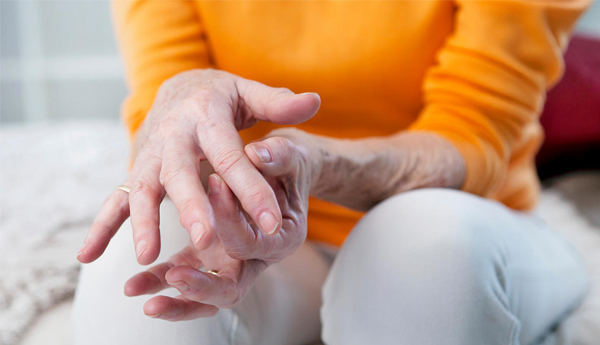
10 Essential Facts About Seronegative Rheumatoid Arthritis
Here are 10 things you should know about seronegative rheumatoid arthritis:
1. Doctors Rely on Symptoms to Diagnose Seronegative RA, Not Just the Results From Blood Tests
Since blood work doesn’t tell the whole story, your doctor will want to find out if you’re experiencing these key symptoms:
-
Morning stiffness for more than an hour in your hands, knees, elbows, hips, feet, or ankles that lasts at least six weeks
-
Joint swelling, tenderness or pain, and sometimes redness. Typically, RA affects distal joints symmetrically.
-
Symptoms that appear symmetrically across the body and in multiple joints
-
Chronic inflammation
-
Morning stiffness that lasts longer than 30 minutes
-
Fatigue
X-rays can also help your doctor make a diagnosis by showing signs of erosions or other boney changes.
2. The Presence or Absence of RF or ACPA Doesn’t Make or Break an RA Diagnosis
Testing for rheumatoid factor in people suspected of having RA was popularized in the 1960s, and experts still don’t fully understand the exact link between these factors and the development of the disease. RF can be positive in multiple diseases, such as Hepatitis C, endocarditis, and multiple myeloma.
“Rheumatoid factor clearly plays a role in how serious rheumatoid arthritis the disease can be,” says John J. Cush, MD director of clinical rheumatology for the Baylor Scott & White Research Institute and a professor of medicine and rheumatology at the Baylor University Medical Center at Dallas. A newer blood test checks for ACPA, which appear to be more closely linked to the development of the disease than RF. In fact, a study published in July 2016 in the journal Autoimmunity Reviews says that ACPA antibodies represent an independent risk factor for developing RA. Having ACPA suggests there’s a genetic risk factor for the disease, but it’s not necessary for either antibody to be present in the blood for a diagnosis of seronegative RA.
3. More Than One-Third of People With RA Have Been Diagnosed With the Seronegative Type
While it’s still far more common to receive a seropositive diagnosis, a study published in August 2016 in the journal Rheumatology found that 38 percent of patients are diagnosed with seronegative RA.
RELATED: Rheumatoid Arthritis Myths Debunked
4. People With Seronegative RA Often Have Different Symptoms
The conventional wisdom is that seropositive patients have more severe symptoms, but recent studies suggest that the difference between the two forms of the disease may have more to do with the joints affected than with the severity of the RA symptoms. And a report published in June 2016 in BMC Musculoskeletal Disordersfound that further research is needed to better understand the long-term outcomes of patients with seronegative RA.
5. Seronegative RA Could Become Seropositive Down the Road
Your rheumatoid arthritis markers may change over time from negative to positive. Many people with seronegative rheumatoid arthritis develop RF or ACPA — often within the first two years of diagnosis, says Dr. Cush, noting that as many as 80 percent of seronegative cases will become seropositive over time. Some cases develop into other autoimmune disease as well.
6. Seronegative Rheumatoid Arthritis Doesn’t Need to Be Treated Differently Than Seropositive
“Whether you are diagnosed with negative or positive, be aggressive in treatment and stay ahead of the disease,” advises Cush. The purpose of treatment in either case is to lessen pain and slow or prevent progression. “Remission as early as possible is the goal,” he adds.
Standard drug therapy in early disease includes nonsteroidal anti-inflammatory drugs, such as ibuprofen (Advil or Motrin) or Celebrex (celecoxib); Plaquenil (hydroxychloroquine), a medication that belongs to a class of medicines known as a disease-modifying antirheumatic drugs (DMARDs); and Trexall (methotrexate), a powerful drug also used to treat certain forms of cancer that works as an immunosuppressant.
7. Seronegative RA May Not Be the Correct Diagnosis
According to Cush, a small percentage of people with the seronegative form of RA will go into remission in the first year or two, and in some people the disease will progress — either mildly or severely. Others will not respond to conventional treatment, which may be because they don’t have RA at all. Spondyloarthritis conditions, which often affect the spine, are sometimes mistaken for seronegative rheumatoid arthritis.
8. New Symptoms May Change the Diagnosis
Eventually, people with seronegative disease may be diagnosed with a different disease altogether, according to the Arthritis Foundation. If, say, a person diagnosed with seronegative RA develops a skin rash, her diagnosis might change to psoriatic arthritis. Other changes or new test results could lead to a new diagnosis of chronicgout or osteoarthritis.
9. There Is No Way to Predict the Future Severity of Seronegative RA
Forecasting how any disease may progress is extremely difficult. Whether you’re diagnosed with seronegative or seropositive, there are no set expectations of how either form of the disease will play out in an individual. “I don’t know which patients I see will have mild symptoms or who will have horrible ones. But if I could choose, I would rather see a patient be diagnosed with seronegative, because it can have a milder course,” says Cush.
10. Seronegative RA Is Sometimes Linked to Having Higher Levels of Inflammation Than Seropositive
In a European study of 234 people who had both types of rheumatoid arthritis and had experienced symptoms for less than two years, those with seronegative RA showed higher levels of inflammation and more affected joints, according to a study published in April 2016 in Annals of the Rheumatic Diseases.
Courtesy : everydayhealth.com

